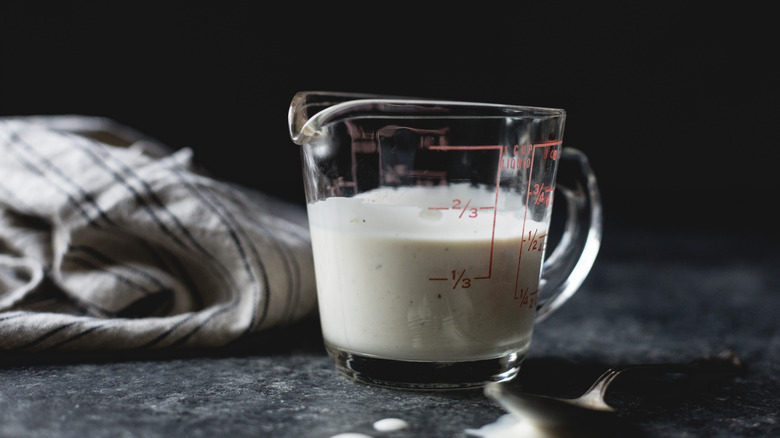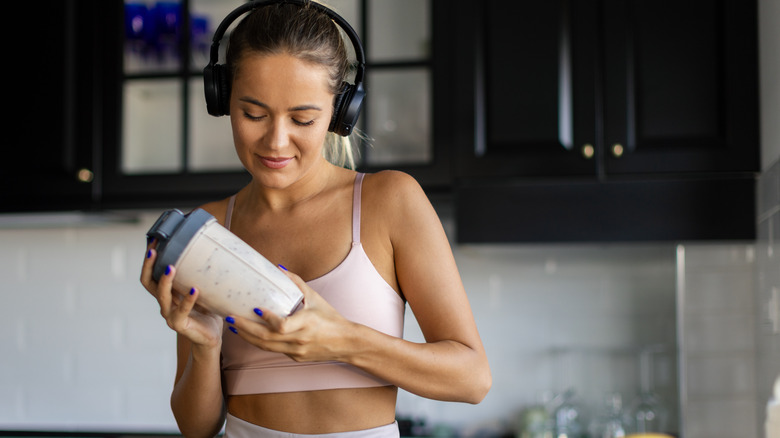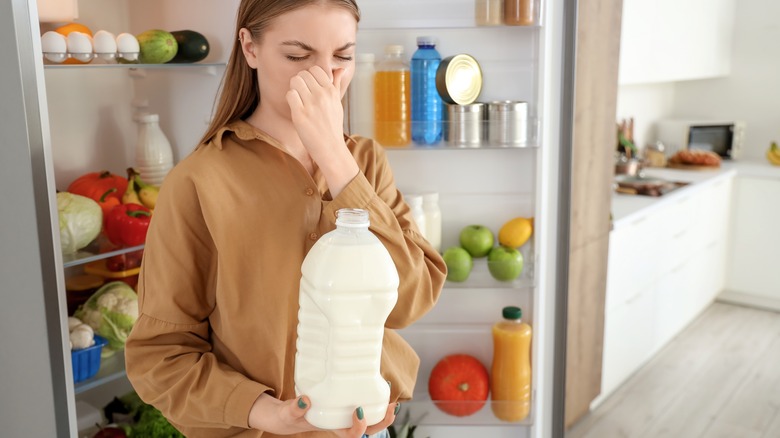Why Your Buttermilk Is Separating And How You Can Fix It
Have you ever gone in the refrigerator to grab some buttermilk, ready to add it to your world-famous (well maybe not world) pancakes to give them some extra tang and fluffiness, just to see it's not the same as you left it; the liquid and solids have separated, and it looks kind of off? That separation is more common than you might think, and it doesn't mean your buttermilk has gone bad. Buttermilk is a cultured dairy product, which means it's made by adding bacteria to milk to ferment and thicken it. Over time, especially if it's been sitting undisturbed in the fridge, it's normal for the solids and liquid to separate a little. It can look strange, especially if you're not used to it, but in most cases, it's totally safe and easy to fix.
Rather than throwing it out or rushing to the store for a fresh carton because you think it went bad, there's a simple way to bring it back to a uniform consistency: shake it up. Yes, it's that simple. Knowing what causes separation and how to handle it can save you a trip to the grocery store and help reduce unnecessary food waste.
Giving it a shake is really all it takes
Most of the time, buttermilk separates because it's been sitting still for a while. Like natural peanut butter or homemade vinaigrette, it just needs a quick mix to get everything back together. A vigorous shake — with the lid tightly on, of course — is usually enough to recombine the liquids and solids into that smooth, slightly thick texture you expect.
If your buttermilk came in a carton that's tricky to shake, you can pour it into a jar or bowl and whisk it for a few seconds. Once stirred or shaken, the consistency should look familiar again. If it still seems clumpy or has an unusual smell after mixing, that might be a sign it's actually spoiled.
Keeping your buttermilk toward the back of the fridge, where the temperature is most stable, can also help reduce how often it separates. The colder and more consistent the temperature, the longer it stays uniform. When you place it in the fridge door, it's subject to temperature fluctuations from opening and closing your refrigerator which leads to separation.
When buttermilk's not safe to use (and what to try instead)
If your buttermilk smells sour in a way that's unpleasant or if it has visible mold or chunks that don't blend back in with shaking, it's time to get rid of it. Expired buttermilk can curdle past the point of usefulness, especially if it hasn't been stored properly. There is some confusion surrounding how long you can keep buttermilk as it's technically already spoiled when you purchase it, but it does expire. Typical shelf life is two weeks after opening.
You can freeze buttermilk if you know you won't use it all before the expiration date. Just pour it into an ice cube tray, freeze, then move the individual cubes to a freezer-safe container. Thawed buttermilk might separate more than fresh, but again, a good stir usually brings it back to life.
In a pinch, you can make a buttermilk substitute with ingredients you probably have at home. Just mix 1 tablespoon of lemon juice or white vinegar with 1 cup of milk and let it sit for 10 minutes. It won't have quite the same tang or thickness as the store-bought kind, but it'll work well in most recipes that call for buttermilk, especially in baking. Understanding that a little separation is natural can keep you from wasting perfectly usable buttermilk. With a few simple tricks, you can get the most out of every carton.


